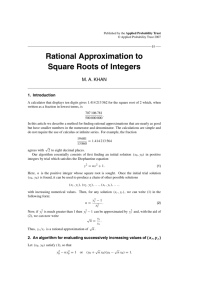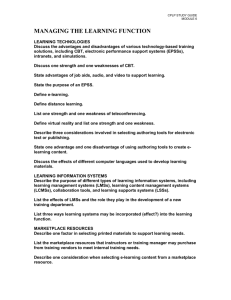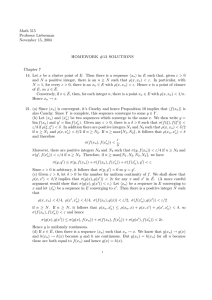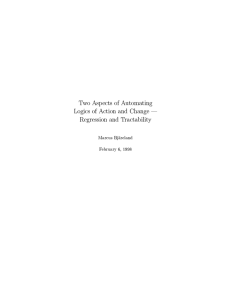SOLUTIONS TO HOMEWORK 5
advertisement
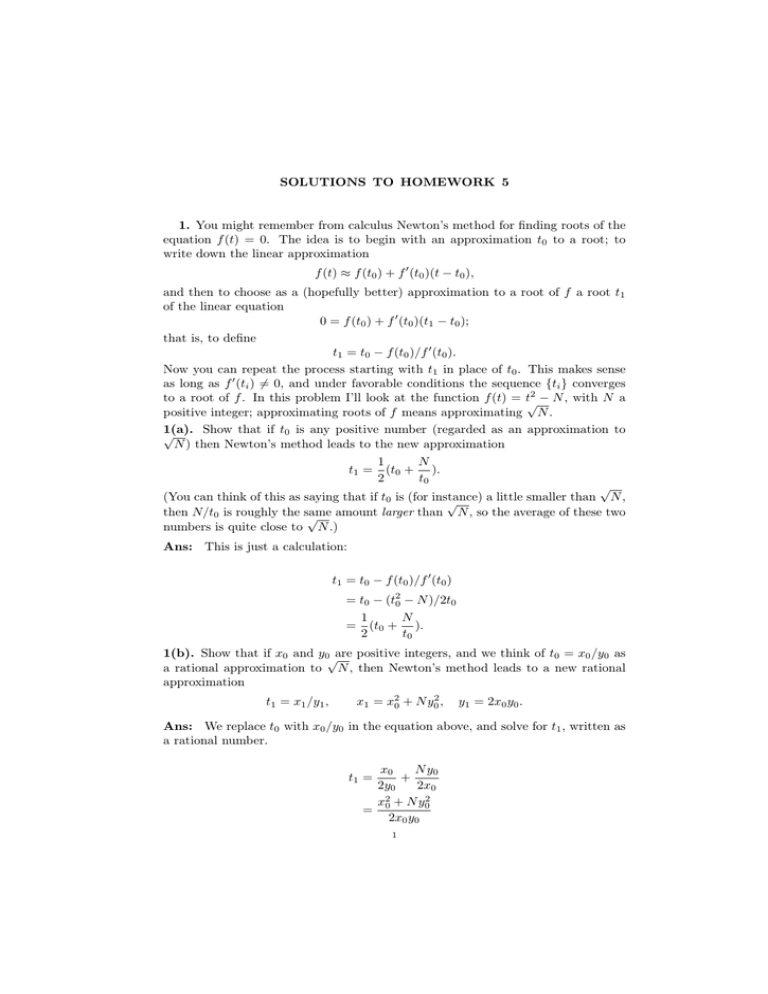
SOLUTIONS TO HOMEWORK 5
1. You might remember from calculus Newton’s method for finding roots of the
equation f (t) = 0. The idea is to begin with an approximation t0 to a root; to
write down the linear approximation
f (t) ≈ f (t0 ) + f 0 (t0 )(t − t0 ),
and then to choose as a (hopefully better) approximation to a root of f a root t1
of the linear equation
0 = f (t0 ) + f 0 (t0 )(t1 − t0 );
that is, to define
t1 = t0 − f (t0 )/f 0 (t0 ).
Now you can repeat the process starting with t1 in place of t0 . This makes sense
as long as f 0 (ti ) 6= 0, and under favorable conditions the sequence {ti } converges
2
to a root of f . In this problem I’ll look at the function f (t) = t√
− N , with N a
positive integer; approximating roots of f means approximating N .
1(a). Show that if t0 is any positive number (regarded as an approximation to
√
N ) then Newton’s method leads to the new approximation
N
1
t1 = (t0 + ).
2
t0
√
N,
(You can think of this as saying that if t0 is (for instance)
a
little
smaller
than
√
then N/t0 is roughly the same
amount
larger
than
N
,
so
the
average
of
these
two
√
numbers is quite close to N .)
Ans: This is just a calculation:
t1 = t0 − f (t0 )/f 0 (t0 )
= t0 − (t20 − N )/2t0
N
1
= (t0 + ).
2
t0
1(b). Show that if x0 and y0√are positive integers, and we think of t0 = x0 /y0 as
a rational approximation to N , then Newton’s method leads to a new rational
approximation
t1 = x1 /y1 ,
x1 = x20 + N y02 ,
y1 = 2x0 y0 .
Ans: We replace t0 with x0 /y0 in the equation above, and solve for t1 , written as
a rational number.
x0
N y0
+
2y0
2x0
x20 + N y02
=
2x0 y0
t1 =
1
2
SOLUTIONS TO HOMEWORK 5
1(c). Suppose that (x0 , y0 ) is a solution of Pell’s equation x2 − N y 2 = 1. Prove
that the pair (x1 , y1 ) defined in (b) is also a solution.
Ans: Again, this is a calculation. We use the observation that if x20 − N y02 = 1,
then x20 + N y02 = 1 + 2N y02 to move from the first line to the second:
(x20 + N y02 )2 − N (2x0 y0 )2 =
1 + 4N y02 + 4N 2 y04 − 4N x20 y02 =
1 + 4N y02 (1 − (x20 − N y02 )) = 0
1(d). You may notice that the new solutions to Pell’s equation provided by (c) all
have y even. Suppose that N is an even integer not divisible by 4. Prove that if
(x, y) is any solution of Pell’s equation x2 − N y 2 = 1, then y must be even.
Ans: For any integer, its square is congruent to 0 or 1 modulo 4. (To check
this, it suffices to check it for the numbers 0, 1, 2, and 3, because a (mod 4) = b
(mod 4) implies a2 (mod 4) = b2 (mod 4), and every integer is congruent to one of
the above four numbers modulo 4.) So, now consider the equation −N y 2 = 1 − x2 .
We know −N y 2 ≡ 0 or 2 (mod 4), because N is even. We know 1 − x2 ≡ 0 or 1
(mod 4). Hence they both are 0 (mod 4). Since N is not divisible by 4, yet N y 2 is
divisible by 4, we conclude that y is even.
2. I’ll be proving in class that if ξ is any irrational real number, then there are
infinitely many rational numbers p/q such that
|ξ − p/q| < 1/q 2 .
Prove that this assertion is false for every rational number: that is, that if r is a
rational number, then there are only finitely many distinct rational numbers p/q
such that
|r − p/q| < 1/q 2 .
Ans: We first prove the obvious fact that for fixed r and q, there can only be
finitely many possible p’s such that the stated inequality holds. We use the triangle
inequality, starting with the assumption that p1 /q and p2 /q both satisfy |r − p/q| <
1/q 2 . In that case:
|(p2 − p1 )/q| = |(r − p1 /q) + (p2 /q − r)|
≤ |r − p1 /q| + |r − p2 /q|
< |1/q 2 | + |1/q 2 |
= |2/q 2 |
≤ |2/q|
Hence, for fixed q, any two numerators satisfying the stated inequality must differ
by less than two.
We’ve showed that, fixing the denominator, there are only finitely many numerators which can work. So, to prove the result, it will suffice to show that there
are only finitely many denominators (when written in lowest terms) which work.
Above we didn’t use that r was rational. Now we do. Write r = a/b, and assume
SOLUTIONS TO HOMEWORK 5
3
both it and p/q are written in lowest terms. We’ll further assume that q > b (which
eliminates only finitely many possibilities).
aq − pb
aq − pb
| ≥ 1/q 2 .
|>|
bq
q2
The last inequality holds because, as both a/b and p/q are written in lowest terms,
and they have different denominators, they cannot be equal, and hence |aq − pb| is
a non-zero integer. Thus, the only denominators leading to the stated inequality
have absolute value no greater than b. Thus there are finitely many of them, and
we are done.
3. Problem 5.4.5 in the text on page 83.
|a/b − p/q| = |
Ans:
solution to x2 − 37y 2 = −1, namely, (6, 1). So,
√ It’s easy to see a non-trivial
√
6 + 37 is an element in Z[ 37] of norm −1. By the multiplicative property of the
norm, the square of this element has norm 1.
√
√
√
√
(6 + 37)(6 + 37) = 36 + 37 + 12 37 = 73 + 12 37.
Hence, a solution of the given equation is (73, 12).

